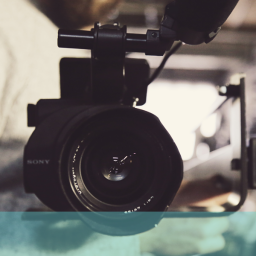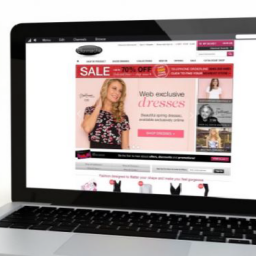
The ROI of Usability
The ROI of Usability Testing
In the world of usability and user experience, Return on Investment (ROI) doesn’t necessarily equate to pound signs.
Usability testing should be an integral part of any design and development process, and although it’s still not a universally accepted practice within the IT community, the tide is definitely turning.
How do you measure the true ROI of a usability test?
Here are some of the variables that can place a value on your user experience research:
- Revenue – Of course, the most common metric of ROI is financial. A tested-to-breaking-point product with a user-centric UI will ensure the customer’s experience is a pleasant one, encouraging more conversions, increased sales, and revenue.
- Trust – If you give your customers a great user experience, you will also build trust in your brand. A user is more likely to engage with a website or app with which they’ve previously had a trouble-free experience than one that’s proved something of a usability nightmare. How customers use your product and return to purchase again is easily tracked via analytics software.
- Development – Usability testing isn’t just about the ROI from customer benefits. Development time may well be compromised without rigid UX framework safeguards. Discovering faults once the product has gone live extends the development cycle as you rush to underpin the house of cards collapsing around you and is potentially ruinous for your brand.
- Maintenance – Releasing a website or app into the wild without conducting usability tests might also lead to problems further down the line. Additional maintenance costs will be incurred if integral design faults lead to user error and frustration or issues with the code, resulting in similar consequences.
- Productivity – Savings can also be made through an increase in productivity of any staff that has to interact with a product for the purposes of customer fulfilment etc. Back-end systems require rigorous testing to ensure the design and UI are conducive to an experience that cuts the time it takes to complete a task, allowing the employee to achieve more.
These are just some of the factors that can benefit your business when integrating usability testing as part of your development cycle.
Is UX worth the investment?
Of course—there wouldn’t be a market full of thousands of UX researchers and businesses if it didn’t offer such a strong ROI for their clients.
As UX research specialists, our job is to ensure our clients uncover all the usability aspects that streamline interactivity, flow, intuitive operation, and ease of navigation to the information they need. These aspects encourage sales and loyalty while discouraging early exits and giving up on poorly planned and badly designed products.
If our clients didn’t achieve the goals we set out to accomplish together, we’re sure they’d have something to say about it. We certainly wouldn’t have the long list of glowing testimonials we’re so proud of.
How do I measure the ROI of my UX strategy?
The beauty of data analytics is that they make it easy to see the change in performance of almost every aspect of your digital product.
The crucial figures revealing the improvements brought about by usability UX implementation are the KPIs to track:
- Conversion rates
- Customer retention rates
- Bounce rates
- Customer satisfaction rates
- Product time-to-market
- Complaint tickets
- Completion of user tasks speed
- User error rates
- Returning customers and increased brand loyalty
Calculating financial ROI from customer counts and conversions is only half the story. We appreciate that each business’s bottom line is based on sales and income improvements. However, when it comes to ROI, the savings made from upgrading usability in many cases is also significant.
Savings made by implementing usability through UX
Let’s go back to an earlier point. Not only does a streamlined and seamless user experience encourage sales, but it also reveals the pain points that you wouldn’t necessarily uncover without such a deep study into the site’s operation.
When it comes to development and maintenance, we can consider a few sample equations to calculate the potential savings as well as those from a reduction in errors and increased productivity.
ROI usability and development costs – Without UX and usability testing, one of the most regular complaints we hear from developers is how much of their work has to be redone when a site or product goes live. Suddenly all the missed pain points become visible!
It’s not the easiest figure to calculate, but paying for do-overs on preventable work items has shown in some cases to boost development costs by up to as much as 50%.
We encourage clients to invest around 10% of the total project budget in UX research and testing, which, when you consider what those additional development costs could add up to, is a significant saving in itself, never mind the boost to conversions and product sales.
- Total development costs = (estimated development cost) + (rework costs [estimated costs x 50%])
ROI usability and maintenance costs – Again, investing in UX reduces much of the maintenance work by removing problem parts of the process before the product build gets underway.
- (maintenance duration) x (employee rate) x (number of employees)
- (2hrs/week) x (£30/hr) x (5 employees) = £300/week or £16.1k/year
ROI usability and reduction of errors savings – Saving time—and money—by reducing the errors in your process that your usability testing uncovers
- (number of errors) x (average recovery time) x (employee rate) x (number of employees)
- (5 errors/week) x (30 mins) x (£30/hr) x (10 employees) = £75/week or £3.9k/year
ROI usability and boost in productivity – An increase in workflow impacts your employee productivity, making further savings against your outgoings:
- (time saved) x (employee rate) x (number of employees)
- (2hrs/week) x (£30/hr) x (10 employees) = £600/week or £32.2k/year
ROI usability and onboarding – Intuitive systems often require little or no onboarding, so training costs are significantly reduced; there’s no need for printed manuals or as many team meetings. We can easily calculate such savings by monitoring the onboarding costs before and after UX implementation, revealing further ROI.
Investing in UX speaks for itself
Exploring the figures is a worthwhile exercise when you need to persuade shareholders that the UX spend will result in the ROI they want to see, but in real-life situations, it’s far easier to see the benefits.
The world’s biggest brands invest heavily in UX, UI, and CX for a reason—it’s vital to longevity, brand confidence, and increased sales.
When you head over to Amazon, Google, Apple, and more, you do, rarely because they’re the cheapest, but because they offer the easiest, most reliable and most enjoyable experience.
These industry giants have invested in UX from the word go, and it’s bought them the trust and continued desire of their customers.
For user experience research, usability testing, and a better return on your investment, contact us today!

















